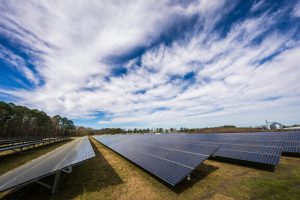Education for Sustainable Development: Teaching Environmental Awareness
Welcome to the world of Education for Sustainable Development (ESD), where we incorporate environmental awareness into our curriculum. In today’s rapidly changing world, it is more important than ever to teach our younger generations about the importance of sustainability and taking care of our planet. With the rise in global environmental issues, educating students about sustainability and environmental awareness has become a crucial part of their education. In this article, we will explore the concept of Education for Sustainable Development and how it can help shape a better future for our planet.
The Importance of Education for Sustainable Development
Education for Sustainable Development is a holistic approach to learning that aims to incorporate sustainable development principles into all aspects of education. It is a process that equips individuals with the knowledge, values, and skills to create a sustainable future for themselves and the planet. The United Nations Educational, Scientific and Cultural Organization (UNESCO) defines Education for Sustainable Development as “a vision of education that seeks to empower people of all ages to assume responsibility for creating and enjoying a sustainable future.”
With the rise of global environmental issues such as climate change, deforestation, and pollution, it has become more critical than ever to educate the next generation about the importance of sustainability and environmental awareness. By integrating sustainability principles into education, we can create a generation of environmentally conscious individuals who are equipped to tackle the challenges of the future.
Teaching Environmental Awareness Through Education for Sustainable Development
The key to creating a sustainable future is by making people aware of the impact of their actions on the environment. Education for Sustainable Development does just that by focusing on three main pillars: environmental, economic, and social sustainability. By teaching these principles, students can develop a comprehensive understanding of how their actions can affect the environment, economy, and society.
Environmental Sustainability
The first pillar, environmental sustainability, is all about understanding the natural world and our place in it. Through ESD, students can learn about the importance of biodiversity, the impact of climate change, and the importance of conserving natural resources. Moreover, students can also learn about sustainable practices such as recycling, reducing waste, and using renewable energy sources.
Economic Sustainability
Economic sustainability focuses on teaching students about responsible economic practices that promote sustainable development. In a world where resources are finite, it is essential to teach students about the importance of responsible consumption, fair trade, and ethical business practices. By understanding these concepts, students can become responsible consumers and make a positive impact on the economy and the environment.
Social Sustainability
Social sustainability is all about creating a just and equitable society for all. Through ESD, students can learn about social issues such as poverty, inequality, and access to education. By understanding these issues, students can become empathetic and socially responsible individuals who strive to create a better world for everyone.
Incorporating Education for Sustainable Development into Curriculum
To make Education for Sustainable Development effective, it is crucial to incorporate it into the curriculum from an early age. By integrating sustainability principles into different subjects, students can develop a deeper understanding of the concepts and their relevance in today’s world. For example, students can learn about the water cycle and its importance in science class, while also learning about water scarcity and conservation in social studies.
Furthermore, it is essential to provide hands-on learning opportunities for students to understand the practical application of sustainability principles. Activities such as gardening, composting, and recycling can help students connect with nature and develop a sense of responsibility towards the environment.
The Role of Educators in Education for Sustainable Development
Teachers play a crucial role in promoting Education for Sustainable Development. They are responsible for shaping the minds of the future generation and instilling positive values and attitudes towards sustainability. Educators can incorporate innovative teaching methods such as project-based learning, field trips, and role-playing to make the learning process more engaging and fun for students.
Moreover, teachers can also serve as role models by practicing sustainable behaviors and leading by example. This can inspire students to adopt similar sustainable practices in their daily lives.
In Conclusion
Education for Sustainable Development is an essential step towards creating a sustainable future. By incorporating sustainability principles into education, we can equip students with the knowledge, values, and skills to create a better world for themselves and future generations. As educators, it is our responsibility to integrate ESD into the curriculum and promote sustainable behaviors to pave the way for a brighter and more sustainable future.






